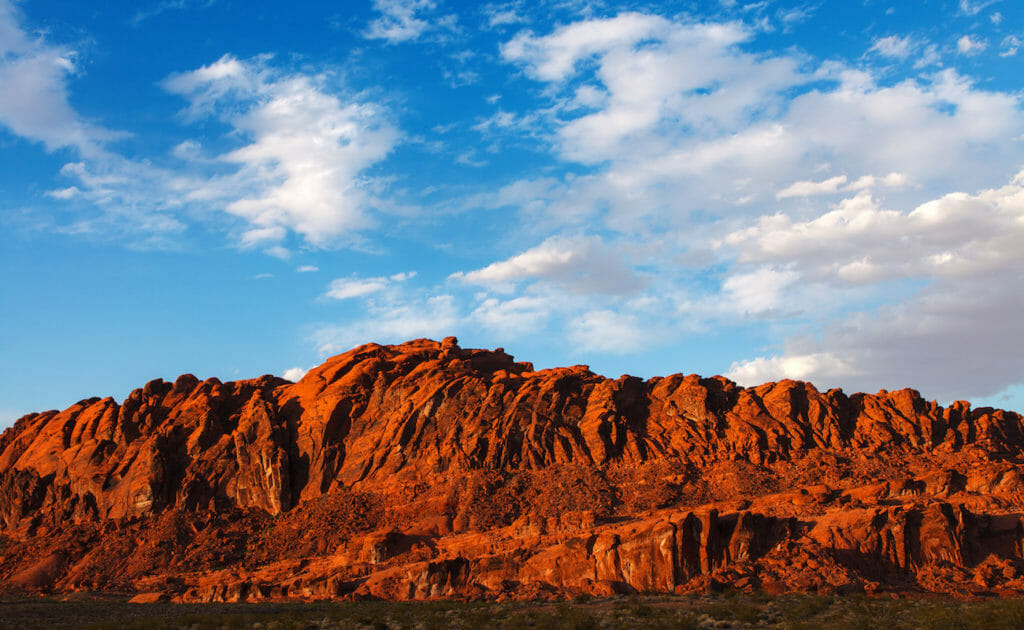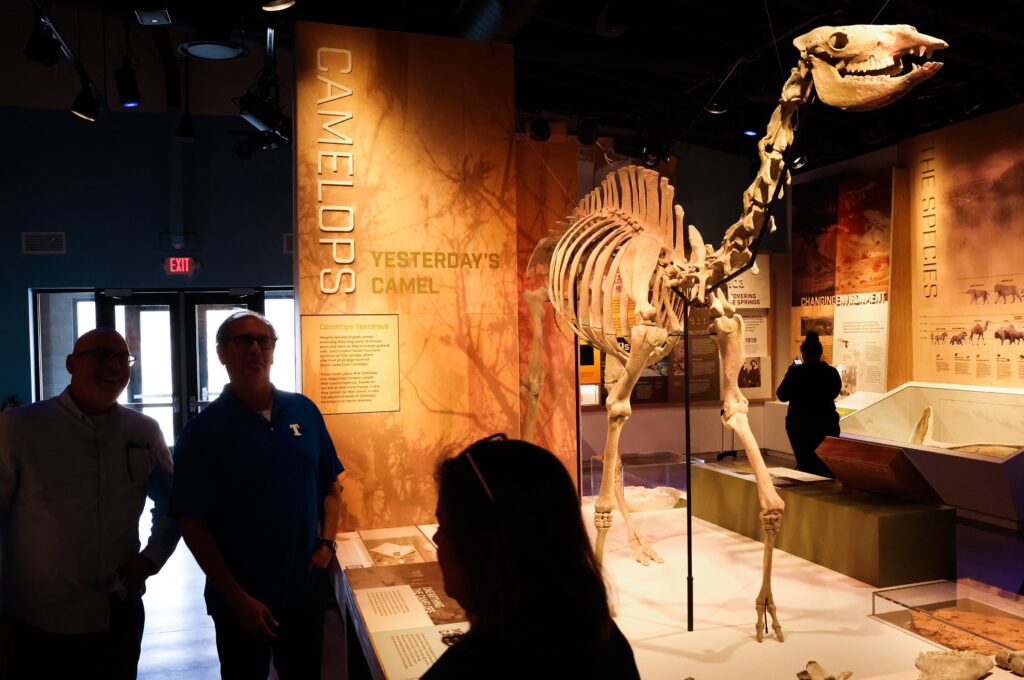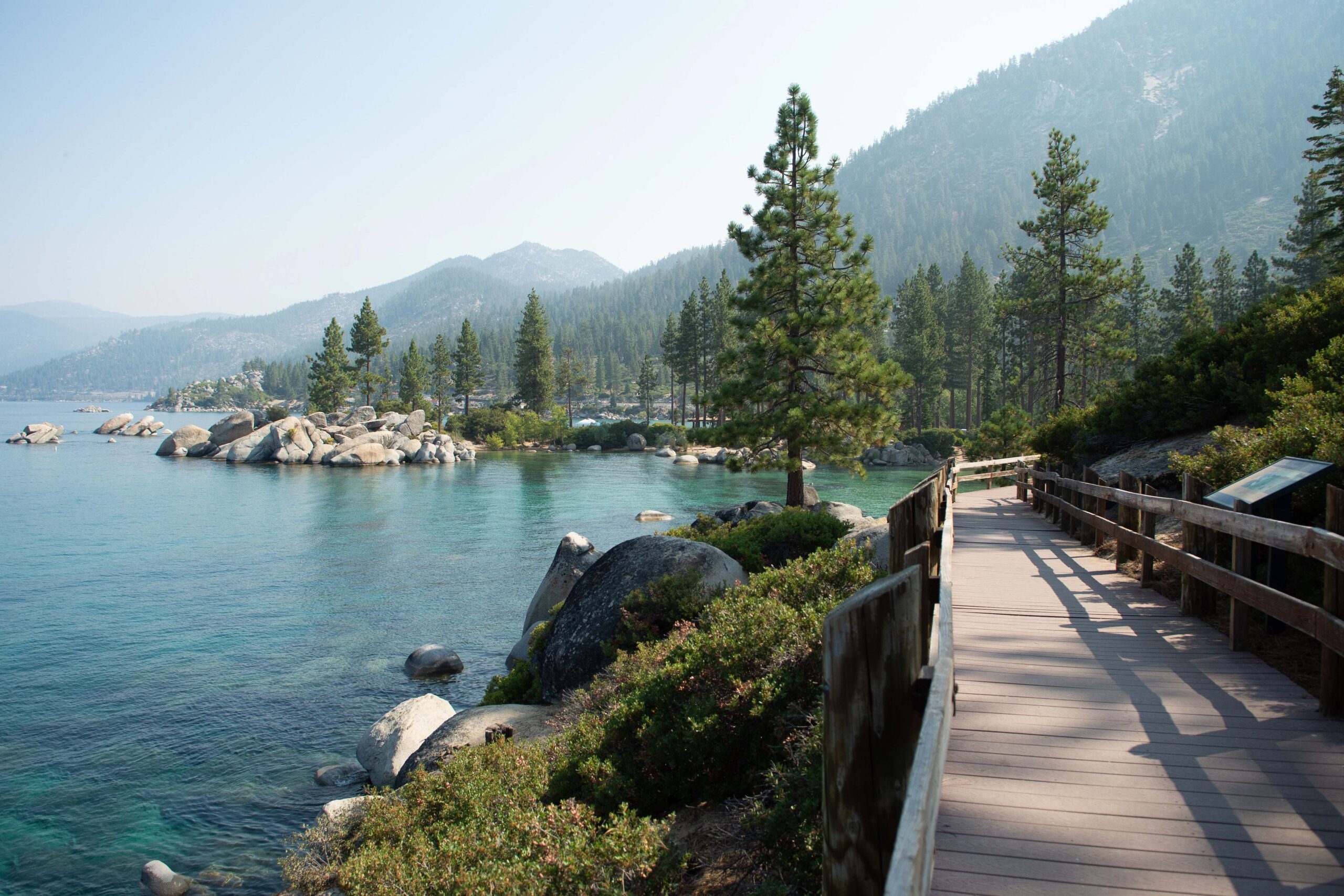Some days, Allen Woolridge plans for the future of Lake Tahoe’s popular state parks. Other days, he empties trash cans and cleans the bathrooms.
Woolridge is the Tahoe region manager for Nevada State Parks, a top administrator with 15 years working for the agency.
But as visitation to Nevada’s parks swells, more than a quarter of Nevada State Parks’ jobs are sitting vacant, pushing remaining staffers like Woolridge to fill in as needed and forcing at least one popular park to implement partial closures.
Nearly 3.8 million people visited Nevada’s 27 state parks in 2022. More than a quarter of those visitors spent their time at Sand Harbor on the east shore of Lake Tahoe and another 766,000 visitors spent their time at Valley of Fire outside Las Vegas. Altogether, Nevada’s state parks cover more than 150,000 acres.
Nevada State Parks relies on 147 permanent and 136 seasonal employees to keep its sites open to the public. But the division has 74 vacant positions — 58 seasonal and 16 permanent — the highest number of vacancies division administrator Robert Mergell has seen in his three decades with Nevada State Parks.
The division’s vacancy rate is in line with the state’s overall vacancy rate — about 25 percent.
The state’s outdated human resource system — more than two decades old and part of a botched multi-million dollar upgrade — didn’t let Nevada State Parks staff pull up the number of vacancies from the past few years for comparison, but “it’s higher than we have ever had,” Mergell said. “It’s gotten worse every year.”
Roughly a third of the vacancies are in the Tahoe Basin, and the majority are at Sand Harbor, where Woolridge sometimes finds himself cleaning the bathrooms.
Park position vacancies are being felt across the state, said Jenny Jackson, education and information officer.
Some parks are struggling because of their distance from urban areas that can provide enough labor, she said, while other parks, such as those in Lake Tahoe, suffer from high costs of living. Others rely on high school and college-aged students who are back in school.
Underlying all of those issues is an issue affecting many state government agencies — a low starting salary, especially for seasonal workers.
The result is a decline in operating hours at Sand Harbor’s boat ramp and a decrease in the visitor experience at some parks, Woolridge said.
And park visitors are likely to notice.
“They (visitors) expect a certain service,” Woolridge said. “They expect to see the beauty and the natural environment, not toilets overflowing and long lines like Disneyland.”
Tahoe’s Sand Harbor illustrates the problem
Sand Harbor draws more than 1 million visitors per year — the most of any Nevada state park.
But this summer, the park is closing its boat ramp two days per week (Wednesdays and Thursdays for the remainder of the season) because of staffing issues.
The next-closest available boat ramp at a state park is at Cave Rock, 14 miles away.
Sand Harbor — which features sandy beaches and rocky coves for swimming and kayaking, and hosts the annual Lake Tahoe Shakespeare Festival — has been short-staffed all year, Woolridge said.
Last year, the park had two or three vacancies, but this year it still had about a dozen vacancies even in the peak summer season. Now, 20 of 34 seasonal positions are vacant. There are six additional vacancies spread between the other three Tahoe-area parks: Spooner Lake and Backcountry, Cave Rock and Van Sickle Bi-State Park.
Seasonal positions include lifeguards and park aides who perform duties such as cleaning bathrooms and collecting trash.
Sand Harbor does not have enough employees to staff those positions and safely manage the boat dock.
The division has resorted to sending state park employees from other assignments as far away as Elko County to the Tahoe Basin to assist with the shortage.
“We’re bringing in people from across the state to try to help out, but obviously that’s expensive and it’s taking away from their parks,” Woolridge said.

Salary increases haven’t made a dent
The reasons for the shortages vary.
In the Tahoe Basin, salaries don’t match up with the high cost of living.
“It’s nearly impossible to live and work in Tahoe,” Woolridge said. “Most of our employees are commuting up from Carson [City] and Reno.”
In 2022, park aide salaries started at $13.55 an hour, while hourly pay for lifeguards started at $15.19.
In June, Gov. Joe Lombardo signed AB522, authorizing the first major salary increase for state workers in years, with raises ranging from 10 percent to 13 percent and another 4 percent increase in the 2024 fiscal year.
With the salary increase, the lowest starting wage for a seasonal employee is up to $15.17 an hour — but that’s still not enough of a draw.
The state’s minimum wage is $11.25 an hour for employees not offered health insurance and $10.25 an hour for those who are offered health insurance.
“Frankly, we just can’t compete at $15 per hour,” Mergell said. “You can go work at a fast food restaurant or anyplace and make more than the $15 per hour that we’re paying.”
And, the tourist season has extended in length as schools let out earlier.
Once spanning from Memorial Day to Labor Day, the tourist season aligned with school schedules, when high school and college-aged students were around to work seasonal summer jobs. Some parks, like Lahontan State Recreation Area, rely on teachers to fill seasonal positions in the summer.
Now, crowds increasingly continue to visit in the shoulder seasons as schools let out later and resume earlier.
Washoe County and Carson City schools didn’t let out until June and resumed Aug. 14. Clark County schools resumed Aug. 7.
“It’s still beautiful out, so we’re still heavy in visitation, but everyone’s gone back to school,” Woolridge said.
State park visitors are also visiting parks outside peak hours to try to avoid crowds.
Sand Harbor, known for its long entrance lines in the morning, has seen visitors shift their arrival times and now sees an influx of visitors throughout the day.
At Southern Nevada’s Big Bend of the Colorado State Recreation Area, the division is rolling out a reservation system to handle long entrance lines. As part of a pilot program, the park now requires reservations for day use during morning hours to relieve traffic at the park entrance. A similar system could eventually be rolled out at Sand Harbor, Jackson previously told The Indy.

Looking for a solution
The division is doing what it can to make its seasonal jobs more appealing, such as adding housing at some of its most remote locations.
At central Nevada’s Berlin Ichthyosaur State Park, the closest town to draw employees from is Gabbs — population 75. Near the Idaho border, Wild Horse Reservoir is a solid 67 miles from Elko.
The division has added housing at these and some of its other most remote parks. Other parks, including Sand Harbor, offer some housing, but not enough to cover all of the park’s permanent employees, let alone seasonal workers.
“If there was a solution to the problem, housing would be it,” Mergell said.
The division has also lowered its minimum age for seasonal employees from 18 to 16, Mergell said.
It’s also converting seasonal positions to permanent. Over the past four years, 10 seasonal positions have been converted to permanent, about half of which were at Valley of Fire.
Later this fall, the division will open its newest state park, Ice Age Fossil State Park in Southern Nevada. The park has four dedicated permanent employees and will need to rely on seasonal hires to fill in the gaps. Mergell already predicts the park will be short-staffed.

